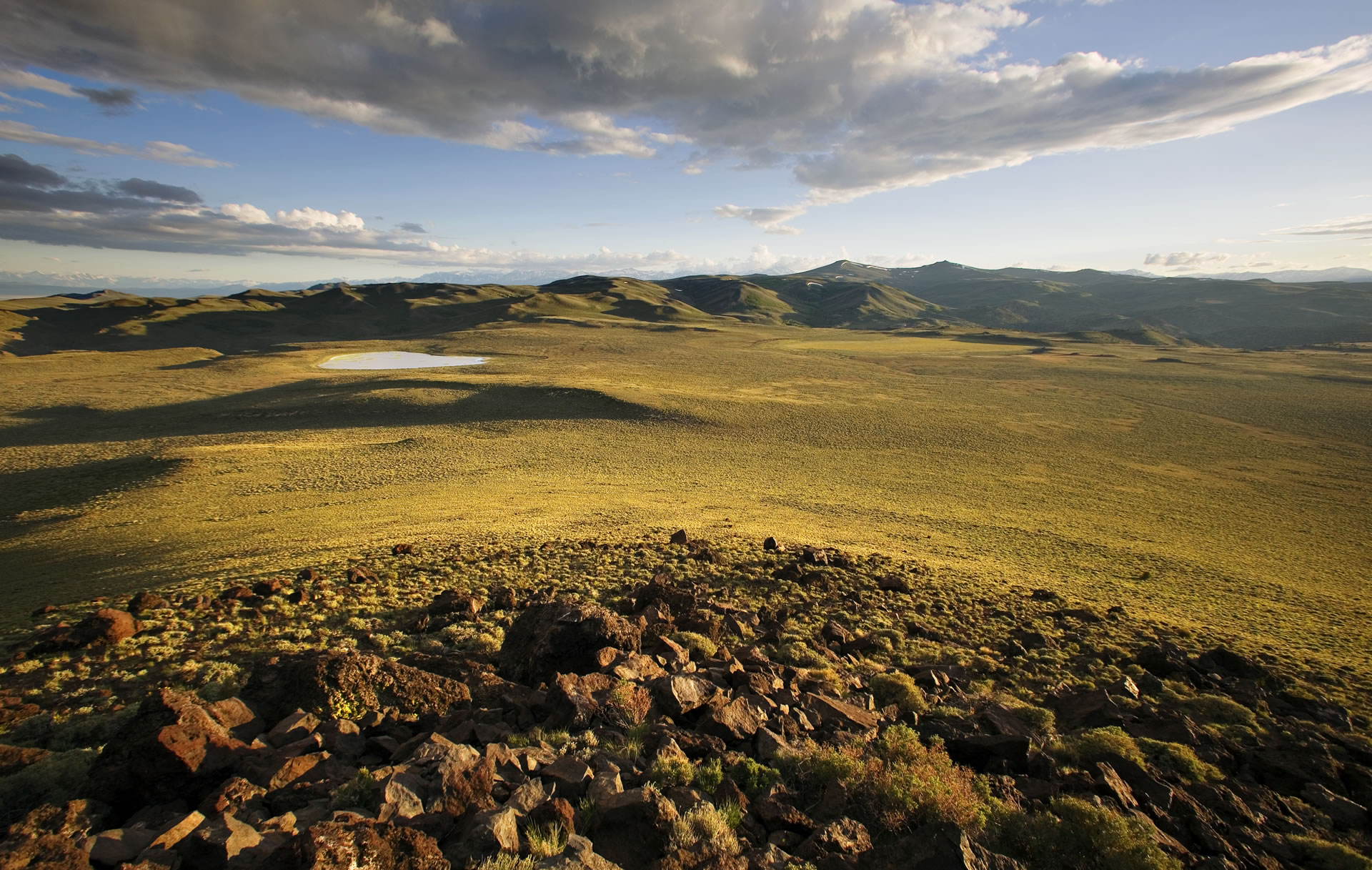Some 7,000 years ago, an extremely hot and dry period gripped the Great Basin. Before it eased up 2,500 years later, lakes had dried up and rivers had stopped flowing. The plants and animals that Native people had traditionally relied on for sustenance slowly disappeared. Many people moved away to more hospitable country.
For the Native people living in what are now Mineral County in Nevada and Mono County in California, however, there was a refuge — the high volcanic plateau at the north end of the Bodie Hills. Situated just east of the Sierra crest, this plateau catches rain and snow blowing over the crest creating a well-watered island in the sky. Throughout the extended historical drought, sage grouse, bighorn sheep, pronghorn, deer and small animals relied on the plateau’s abundant plant life. And our people survived up there with them.
We know this through the traditional histories passed down to us by our elders, all of which are supported by an extensive archaeological record on the volcanic tableland. In our Numu language, the four tribes that surround the Bodie Hills call this place “Tuvogatudu,” which means “where the teachings abide.”
In our traditional way of connection to the land, this plateau is a refuge for plants and wildlife, and a cultural landscape because the two are intimately connected. To us, this is a shared sacred traditional land area still used today for food and materials gathering and for spiritual connection. It must be protected.
Now, however, a minerals development company with Canadian roots has been permitted to drill a number of 1,500-foot-deep exploratory holes into this plateau in the hopes of finding evidence of gold and silver ore. Due to the geology of Tuvogatudu, this ore can only be extracted from the land by excavating a massive open pit mine.
Soon these speculators will clear the land to build drilling platforms to house the heavy equipment to be dropped from helicopters. They will fly helicopters loaded bladders of water from the Aurora mine pit to lubricate the drilling rigs. They will do this through the summer/fall fire season. What could possibly go wrong?
Who should care about this besides Native people? Perhaps local hunters. The plateau is on the seasonal path of the pronghorn herd and a mule deer migration route. This intrusive exploratory work will happen throughout the 2024 deer hunting season. If a strip mine is the result, the deer and pronghorn will have to go elsewhere — if they can.
Or perhaps those who care about the fate of the bi-state sage-grouse whose dwindling populations are under a special management order in the hopes of avoiding restrictions on grazing and the popular recreational uses that support local economies. As their numbers drop in surrounding areas, the Bodie Hills upper elevations are documented as one of the last best safe places for sage-grouse and pronghorn.
These are lands that were taken from us and now, under United States law, they belong to the people of this land. How is it that foreign companies are able to do this?
Tuvogatudu needs better, more integrated management by the federal land managers. It is split by the Nevada-California state line, managed on the Nevada side by the United States Forest Service and by the Bureau of Land Management on the California side. Although it is an ecological and a cultural whole, these agencies have contrasting policies for mining, development and road use. Each agency has its own decades-old management plan, and each plan was written at a different time with different goals in mind. Neither of these management plans considered the tribal cultural significance of this ancient plateau when they were written 30-plus years ago.
This is why our tribal coalition, composed of the Bridgeport Indian Colony, the Mono Lake Kutzadika’a, the Yerington Paiute Tribe and my tribe — the Walker River Paiute Tribe — has formally requested that the two federal government agencies stop permitting ground disturbing activities up there.
We are asking the U.S. Forest Service and the Bureau of Land Management to formally recognize the significance of this landscape that straddles the state line, coordinate their work and develop a joint management plan that involves our tribal governments as partners.
We are also asking the United States senators and members of congress from California and Nevada to push these federal agencies to save this place so central to our creation, teachings and cultural survival.
Andrea Martinez is the chairman of the Walker River Paiute Tribe.
The Nevada Independent welcomes informed, cogent rebuttals to opinion pieces such as this. Send them to [email protected].

